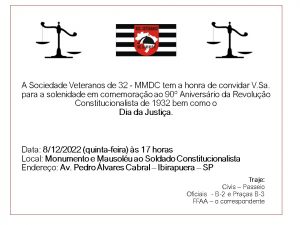What Are Accruals? How Accrual Accounting Works, With Examples
The term accrue is often related to accrual accounting, which has become the standard accounting practice for most companies. While accrual accounting may be considered a more complex method than cash accounting, it can provide bookkeepers and accountants with a more accurate long-term view of a business’s finances. As a result, having an accrual can definitely aid in decision-making, compliance with accounting standards, and overall better matching of revenue and expenses in comparison to cash accounting.
- Similarly, expenses are recorded when they are incurred, regardless of when they are paid.
- However, the accrual method accounts for earnings the moment they are owed to you and expenses the moment you owe them; it does not matter when your money enters or leaves your account.
- So, for instance, if a business were to provide a good or service on credit, the transaction would be recognized into the accounting reports at the time of sale, not when cash is received from the client in the future.
- Accrued interest refers to the interest that has been earned on an investment or a loan, but has not yet been paid.
- These financial statements provide a comprehensive picture of a business’s financial performance and position, including revenue, expenses, assets, and liabilities.
Accrual accounting remains an integral part of financial accounting today because it allows businesses to account for all transactions that have yet to take place concerning revenues and expenses alike. Since accrued expenses and revenue must be accounted for before the actual cash transaction occurs, they affect cash short and over definition and meaning net income. Debitoor allows you to record each transaction and register payment when sent or received. Your dashboard gives you a unique overview of revenues and expenses for your business each time you login. Under modified accrual accounting, revenues are recognized when they become available and measurable.
This means that the landlord doesn’t receive payment until after services have been provided. Using the accrual accounting method, the landlord would set up an accrued revenue receivable account (an asset) for the $2,500 to show that they have provided services but haven’t yet received payment. In other words, the revenue earned and expenses incurred are entered into the company’s journal regardless of when money exchanges hands. Accrual accounting is usually compared to cash basis of accounting, which records revenue when the goods and services are actually paid for. By recording revenue and expenses when they are earned or incurred, regardless of when the money actually changes hands, accrual accounting provides a more accurate picture of your company’s financial health.
Accruals Example — Accrued Expense
For example, let’s say that Company A has accrued revenue and expenses on their books. While there is no actual movement of cash in this scenario, the business has accrued $150 worth of revenue and expenses. The accounting software has a professional invoice creation tool that allows you to easily send invoices and receive bills that are once again automatically entered into the corresponding payable and receivable accounts. With this information, businesses can have full control over their finances, client past due invoices, and liabilities towards vendors.
- If splitting your payment into 2 transactions, a minimum payment of $350 is required for the first transaction.
- So, if you’re running your own small business and don’t have any professional accounting help, accrual accounting can take up extra time and resources to manage.
- When the two methods are compared, it becomes clear that the accrual accounting method offers certain advantages, which will become apparent in the next section.
- For example, let’s say a customer paid $100 for your consulting services in January, but you’ll only be providing the service in February.
This can be helpful for cash flow, but keep in mind that some tax agencies have rules around which businesses are allowed to use cash basis accounting for tax purposes. The company would recognize $10,000 ($100 x 100 customers) as accrued revenue on the balance sheet at the end of January, because it has earned the revenue but has not yet received payment. The company would record a debit of $10,000 to the accrued revenue account and a credit of $10,000 to the revenue account. The main difference between accrual and cash basis accounting lies in the timing of when revenue and expenses are recognized.
How Do You Explain Accrual to Non-Accountants?
While ABC owes XYZ $50,000 after each monthly milestone, the total fee accrues over the duration of the project instead of being paid in installments. Synder is a solution that can help sync and reconcile all your financial data in a matter of seconds. If you’re interested to see how Synder can help you scale your business, sign up for a free trial or book a demo today.
Get RazorpayX Current Account – it’s built for disruptors like you
However, less knowledge of accounting is needed to operate a cash basis system, so many smaller businesses that cannot afford a trained accountant use it. The Internal Revenue Service sets a threshold gross receipts test for taxpayers, below which it allows them to report taxable income using the cash basis of accounting. Above that threshold level, taxable income must be reported using the accrual basis of accounting. Accrual basis accounting conforms to the generally accepted accounting principles (GAAP) and international financial reporting standards (IFRS) frameworks.
Likewise, you can show which bills your business has already paid and any expenses or liabilities that have yet to be dealt with. This method makes it easy to keep the unique situation of each sale or bill up to date, making adjustments when each item is satisfied or keeping notes of anything still outstanding. This article explores how cash and accrual accounting work, their benefits and disadvantages, the best software tools for each option and which accounting method works best for what types of businesses. Accruals allow a business to keep thorough records of sales and expenses, even if payment has not yet been made or received for goods or services rendered. The new balance sheet entry will update the balance sheet to reflect the accrued revenue and will also update the income statement to reflect the revenue earned. For example, let’s say a company provides a subscription service to customers for $100 per month.
The key advantage of the cash method is its simplicity—it only accounts for cash paid or received. Another disadvantage of the accrual method is that it can be more complicated to use since it’s necessary to account for items like unearned revenue and prepaid expenses. As each month of the year passes, the dental office can reduce the prepaid expense account by $12 to show it has ‘used up’ one month of its prepaid expense (asset). It can simultaneously record an expense of $12 each month to show that the expense has officially incurred through receiving the magazine. As each month of the year passes, the gym can reduce the deferred revenue account by $100 to show it’s provided one month of service. It can simultaneously record revenue of $100 each month to show that the revenue has officially been earned through providing the service.
Accrual Accounting
Like accrued revenue, the consultation fees are recognized on the income statement in the current period despite the company still being in possession of the cash. The accrual method records accounts receivables and payables and, as a result, can provide a more accurate picture of the profitability of a company, particularly in the long term. Accrual accounting is helpful because it shows underlying business transactions, not just those with cash involved. Most transactions a company has are straightforward, with payment happening at the time of the transaction. Other, more complicated transactions involve buying and selling on credit, which requires a company to account for monies that they will have to pay or receive at a future date.
Accrual accounts include, among many others, accounts payable, accounts receivable, accrued tax liabilities, and accrued interest earned or payable. Accrual accounting is an important aspect of financial management for any business big or small, including those that operate through e-commerce platforms such as Shopify. Shopify is an all-in-one platform that provides businesses with tools to create and manage their online stores, as well as process transactions, manage inventory, and track sales.
This does not prevent an employee from calling in sick immediately after being hired, but it does mean that they will not get paid for this time off. However, it does prevent an employee, for example, scheduling a vacation for the second week of work. After this trial period, the award of time may begin or it may be retroactive, back to the date of hire. Within these guidelines, the rate at which the employee will accumulate the vacation or sick time is often determined by length of service (the amount of time the employee has worked for the employers). For most employers, a time-off policy is published and followed with regard to benefit accruals. These guidelines ensure that all employees are treated fairly with regard to the distribution and use of sick and vacation time.
While cash accounting is simpler and easier to manage, accrual accounting provides a more accurate picture of a company’s financial performance and position, as we’ll see in more detail in the next section. This is because accrual accounting recognizes revenue and expenses as they are earned or incurred, rather than when cash changes hands. The cash basis is not considered as accurate as accrual accounting, since the recognition of transactions under the cash basis may be accelerated or delayed in accordance with when cash is received or paid.
What is accrual-basis accounting?
On the other hand, if the company has incurred expenses but has not yet paid them, it would make a journal entry to record the expenses as an accrual. This would involve debiting the “expenses” account on the income statement and crediting the “accounts payable” account. For the incurred expenses (to be paid in the future), an accrual expense journal entry is created, involving debiting the “expenses” account on the income statement and crediting the “accounts payable” account. In accounting, accrual refers to the recognition of revenue or expenses that have been earned or incurred, respectively, but have not yet been recorded in the accounting system. The accrual method of accounting recognizes revenue and expenses when they are earned or incurred, regardless of when the money is actually received or paid. With cash accounting, you also only have to pay tax on money you’ve actually received rather than on invoices you’ve issued.






